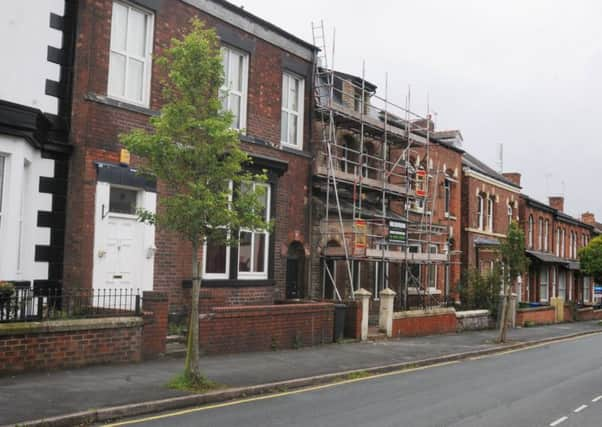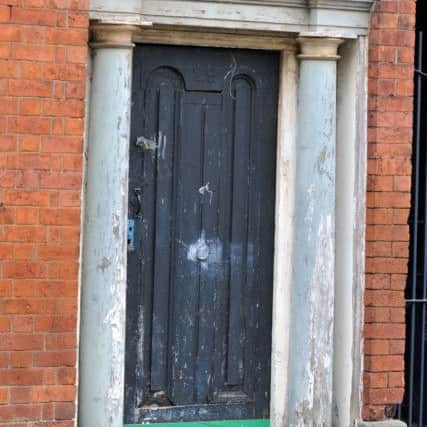'˜Lovely houses are being ruined'


Fears have been raised about the alterations being made to properties on Upper Dicconson Street in Swinley.
Some of the houses have had new window frames fitted while others have had larger modifications to turn them into flats.
Advertisement
Hide AdAdvertisement
Hide AdThe street falls into the Dicconson conservation area, which aims to preserve the character of the properties and the surroundings.


But Sara Coburn, who lives on Upper Dicconson Street, has believes alterations being made do not always follow the guidelines.
She said: “The integrity of the buildings is really key and the loss of the Victorian look and the internal features of each of these properties.
“A lot of the doors need to be replaced with fire doors, the ceilings need to be lowered to comply with building regulations. In doing that, they lose key features in Victorian buildings.
Advertisement
Hide AdAdvertisement
Hide Ad“Also, whilst it’s supposed to be a conservation area, outwardly the buildings are not being protected because they are being allowed to put in new PVC windows, plastic doors, taking out original sash windows and taking out original front doors.


“It’s a nonsense. If it’s a conservation area, it needs to be a conservation area. The rules can’t be applied in an ad hoc way which seems to be happening now.
“For some buildings the rules are strictly enforced while for other buildings, anything goes.”
Mrs Coburn, 50, has lived on Upper Dicconson Street with her husband and three children since 2010.
Advertisement
Hide AdAdvertisement
Hide AdTheir home is a listed building as soap manufacturer Lord Leverhulme lived there from 1877 to 1884 and it still contains many features from that time.
Mrs Coburn said: “It has protections already imposed upon it that we knew about when we bought the building. Putting in an offer and having it accepted and moving in, we accepted all the things that go with that.”
Being in a conservation area means there are many limits on what people can do to the properties there.
To help preserve the character and appearance, planning permission is needed for many minor alterations, such as cladding, dormer windows, replacement roof materials and even the installation of satellite dishes.
Advertisement
Hide AdAdvertisement
Hide AdMrs Coburn experienced these rules when she tried to install new windows at the rear of her home.
She understands that properties should have sliding sash windows on the ground floor - similar to those used when they were built - and windows that look like sash windows on upper floors.
She said: “We applied to change our windows on the rear elevation of our house.
“We have got all original sashes at the front, which we have renovated. We knew we couldn’t take them out and we wouldn’t want to because we love them.
Advertisement
Hide AdAdvertisement
Hide Ad“We applied for plastic sash windows at the back and were told no, they had to be wooden sash windows. We had to get wooden sash windows made and when we submitted plans for that, they were really picky and we had to resubmit the plans until they were happy with them.”
She says other owners have had to shell out for the sliding sash wooden windows as per the rules - but others have not.
She cited several examples where uPVC windows had been installed in houses and nothing had been done to enforce it. In recent years, more and more of the houses have been converted into flats.
Earlier, this month, planning permission was approved to convert a three-storey house previously used as offices and a nursery into a “house of multiple occupation”.
Advertisement
Hide AdAdvertisement
Hide AdMrs Coburn said some of conversions had been well done and their Victorian features maintained, but she feared that was not always the case.
“I don’t have a major objection to them being flats,” she said. “It’s preferable for them to be habitable, looked after, than for them to go to total wrack and ruin.
“But it’s how they are looked after that’s important.”
She continued: “What I object to is when people have no regard, they rip out traditional features, they make them look like any other property and they are allowed to put in sub-standard windows.
“It’s really important. If it’s not important, then remove the conservation area status.”
Advertisement
Hide AdAdvertisement
Hide AdMarie Bintley, assistant director for growth and housing at Wigan Council, said: “We take the conservation of Wigan borough’s historical areas very seriously as we recognise the importance of keeping our heritage in place. For planning applications that are received within these areas we look to ensure that architectural features are retained wherever possible in line with national guidance.
“For other matters we rely on members of the public reporting any potential breaches of planning control within conservation areas and any reports received are investigated.”